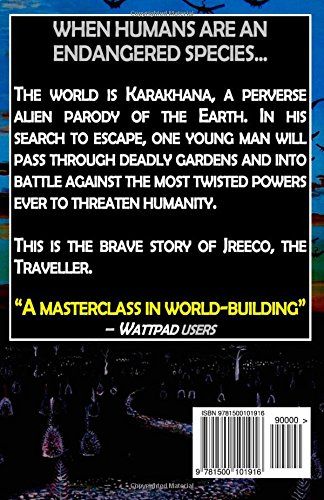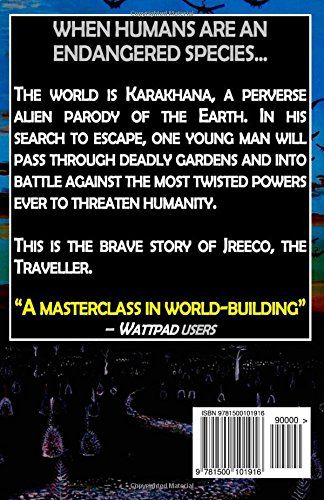VICTORY: Getting Fortune-500 Prospective Client’s Cash, Continually and Successfully! By Mr. Andres Agostini at www.linkedin.com/in/AndresAgostini
HOW TO SUCCEED IN BUSINESS ACCORDING TO THESE COMPANIES:
Mitsubishi Motors, Honda, Daimler-Chrysler’s Mercedes-Benz, Toyota, Royal Dutch Shell Oil Company, Google, Xerox, Exxon-Mobil, Boeing, Amazon, Procter & Gamble, NASA and DARPA, Lockheed Martin, RAND Corporation and HUDSON Institute, Northrop Grumman Corporation, etc.
FIRST. You fully study the corporation’s story and current culture and lexicon.
SECOND. You fully study the corporation’s financial and legal and compliance and tax standing.
THIRD. If the corporation is publicly traded, you strongly look into this.
FOURTH. You fully study the corporation’s industry and all of its competitors.
FIFTH. If the industry to which belongs the designated corporation is facing an extraordinary unforeseen challenge, make a long executive presentation for the middle-management executives, fully acknowledging the details of said challenge and suggesting, as per authoritative authors in the subject matter, a well-organized myriad of viable fundamental solutions.
At all times, you are to make this executive presentation like a presentation to a sacred university professor and classroom, hence an institutional one only, and not a marketing one as you objective is to break the ice with your targeted corporate client ONLY through meaningfulness, utility, relevance, and purposefulness.
In no slide you would mention your name, but in your solemn business cards.
Throughout this executive presentation, you will NEVER be addressing any theme natural to your Core Business’ Products and/or Services, but in your solemn business cards.
(Commentary to FIFTH. Why does it have to be a long executive presentation? I will respond through Napoleon Bonaparte’s best practices.
Every time a General (Manager) under his Command would give him a one-page letter (memo, slide), Napoleon would say to his General in question,
“…General (Manager), you are to wage a grave military campaigns full of dynamics and details … I want to KNOW everything at all in advance, every detail at all, large or tiny, in order for me to issue my most-detailed commanding plans for your campaign …”
Frequently, Napoleon would dishonorably discharge this General (Manager) or have his head role for incompetence, incompetence is another word for people with a Mind “Engaged” in worshiping The Least Mental Effort, thus repudiating the “extra mile” effort.
Clearly, Napoleon, during his life time and early on, heavily warns against Corporate America CEOs wanting JUST a 1-page memo delivered via email.
SIXTH. Then, you call the prospective corporate client’s P.R. person Or Communications officer and tell them about what you would like to do.
You send a letter with a summary of your presentation via FEDEX. They will give you a time and board room for your presentation, to be received by the corporation’s middle-level and supervisory-level management workers.
SEVENTH. Once you drive you car to the corporation’s office, pay extreme attention to (first) the lower-level security personnel, (second) the front-desk receptionist, and, if possible, and (third) to the great janitorial staff.
Get extremely respectful with them and treat them as the Chairman and become a bit friendly as you try to get the company’s ethos’s by and through the lower-level security personnel, the front-desk receptionist, and the great janitorial staff.
Listen and mind-record their word types and wording construes most carefully.
In my case, by observing the front-desk receptionist for ten (10) minutes, I can tell you exactly what type of corporate culture there is about my coping with, much more importantly than those confidential underground reports by Wall Street Bankers and Trader.
EIGTH. Before starting the executive presentation, say to the audience that you would like to introduce yourself to each one of them and shake their hands, to bring about much more psychological proximity and fore-acceptance.
Then, explain the order of your executive presentation. Second, with great care, deliver the presentation without attacking people, institutions, or even ideas.
Use, with extreme care and utility, their parlance and corporate culture at all times while you get, from A to Z, very solemnly.
Once you have thoroughly and calmly finished your executive presentation, use the Lee Iaccoca’s rule and say,
“ …okay, we have completed this executive presentation and through it we saw this, that, x, y, z,…” in a summarized way.
Give them now boundaryless time and psychological space to ask you zillion questions in the Q-and-A.
Ascertain to respond fully, accurately, on the point and with NONE MANIPULATION at all. If there is something that you do not know, tell them, research the answer fully, and get back with the answer via FEDEX-ed hard-copy.
Once you have responded all of the questions, give them an exact copy of the Executive Presentation, with the additional attachment of the authoritative literature you used in your evidence-based research.
Do this in hard-copy only and put it a nice white envelope. You give one package to each attendee and give the P.R. Manager three or four more for the CEO and the Board Members.
NINE. If you followed through to ULTIMATE PERFECTION, points #1 through #8, step by step, you will see them ask you something along these lines,
“…Okay, Mr. A, we like you evidence-based research and executive presentation and wonder who in the marketplace could offer these solutions to us …” Without being or sounding desperate, you will say quickly and softly, “… Our Company can fully take care of those for you …”
And the idea now is that you go from a Pro Bono Executive Presentation into a formal for-business conversation with your prospective corporate client.
As the formal conversation begins, as per my long experience, tell them kindly that in parallel you want to fulfill the corporation’s Guidelines to become a Registered Contractor as per your company’s Lines of Professional Practice.
Also in parallel, ask the mid-level managers that you are formally talking to that you would like to gain more familiarity by doing some small talk with lower-level employees, including the lower-level security and janitorial staff.
Put in writing a detailed overview and hand to him or her personally.
Sometimes these folks know the corporation better than the CEO.
THEN, FOLLOW THROUGH THESE PRACTICAL TENETS CONDUCIVE TO OUTRIGHT VICTORY:
(1.- of 17 ).- If you want to seize the undivided attention of top executives at Los Alamos National Laboratory and Procter & Gamble, talk to them through the notions of and by Process Re-engineering.
(2.- of 17 ).- If you want to seize the undivided attention of top executives at GE, talk to them through the notions of and by Six Sigma, and Peter F. Drucker’s Management by Objective (MBO). While you are with them, remember to commend on the Jack Welch’ and Jeff Immelt’s master lectures at GE’s Crotonville.
(3.- of 17 ).- If you want to seize the undivided attention of top executives at RAND Corporation and HUDSON Institute, talk to them through the notions of and by Herman Khan’s (Dr. Strangeloves’) Scenario Methodology.
(4.- of 17 ).- If you want to seize the undivided attention of top executives at Mitsubishi Motors and Honda and Daimler-Chrysler’s Mercedes-Benz and Maytag, talk to them through the notions of and by Kaisen.
(5.- of 17 ).- If you want to seize the undivided attention of top executives at NASA and DARPA and the Industrial-Military Complex, talk to them through the notions of and by Systems Approach with the Perspective of Applied Non-Theological Omniscience. And, also, want to get funded by DARPA? How? The pathway is extremely easy and promissory. Just give them an unimpeachable real-life demonstration of how to “violate” the Laws of Physics correctly and frequently, for Life!
(6.- of 17 ).- If you want to seize the undivided attention of top executives at Lockheed Martin, talk to them through the notions of and by Lean, Six Sigma and Skunk Works.
(7.- of 17 ).- If you want to seize the undivided attention of top executives at Toyota, talk to them through the notions of and by Toyota Production System (methodology). Please remember: TPS is also known as “…Thinking People System…”
(8.- of 17 ).- If you want to seize the undivided attention of top executives at Royal Dutch Shell, talk to them through the notions of and by Pierre Wack’s Scenario Methodology.
(9.- of 17 ).- If you want to seize the undivided attention of top executives at Mayo Clinic, talk to them through the notions of and by Dr. Joseph Juran’s (Total Quality Assurance) Prescription (ISBN: 978–0787900960).
Also remember to conjointly speak, at all times, of efficiency, productivity, and ROI as it stems in the incessant real-time reckoning of man-hours per patient cured and healed.
To this end, you might wish to peruse this great title: The Essential Drucker: The Best of Sixty Years of Peter Drucker’s Essential Writings on Management by Peter F. Drucker (ISBN: 978–0061345012).
(10.- of 17 ).- If you want to seize the undivided attention of top executives at Google, talk to them through the notions of and by Strong Quantum Supercomputing and Human-Death Reverse-Engineering, as well as Curing Human Death.
(11.- of 17 ).- If you want to seize the undivided attention of top executives at Xerox, talk to them through the notions of and by PARC (Palo Alto Research Center Incorporated).
(12.- of 17 ).- If you want to seize the undivided attention of top executives at ExxonMobil, talk to them through the notions of and by Efficiency and Productivity as well as Return On Investment (ROI) per Petroleum Barrel produced (outputted), and Project Management.
(13.- of 17 ).- If you want to seize the undivided attention of top executives at Boeing, talk to them through the notions of and by Aerospace Engineering, Avionics, Systems Engineering, Reliability Engineering, Safety Engineering, Industrial Engineering, and Mechanical Engineering.
(14.- of 17 ).- If you want to seize the undivided attention of top executives at SETI (Search for ExtraTerrestrial Intelligence), talk to them through the notions of and by Superintelligence entrenched, in “… plain sight…,” in the covert ad infinitum realm of Dark Energy and Dark Matter.
(15.- of 17 ).- If you want to seize the undivided attention of top executives at Loyd’s of London, Swiss RE, Munich RE, and Allianz, talk to them through the notions of and by Minimax, Statistics, Actuarial Science, Predictive Analytics, and Systems Engineering.
(16.- of 17 ).- If you want to seize the undivided attention of top executives at Amazon, talk to them through the notions of and by Low-Cost And High-End Online Commerce, Content Creation, Hi-Tech, Quadcopters (Commercial Flying Drones), and Eternal Staggering Innovation. Don’t forget to mention the Mechanical Turk.
(17.- of 17 ).- If you want to seize the undivided attention of top executives at Northrop Grumman Corporation, talk to them through the notions of and by State of the Art: Quality, Continuous Improvement, Customer Satisfaction, Leadership (Man-Management and Statesmanship), Integrity, People, Suppliers, Sound Business Management, “…Best in Class…” Products and Services, and how to preemptively countermeasure Chinese penetrations and otherwise of both commercial and government networks in the United States.
NOTE: I know great c-suite consulting incumbents and other professional service providers who want to get the undivided attention of 90% of the CEOs above at once.
The majority of those CEOs are august applied scientists. They are only into applied scientific management. Ergo, they really need to get ready to be multidimensional and cross-functional and multifarious.
There is, NEVER EVER, no Internet resource, nor an online book or article giving you this most-profound advice/
Authored By Copyright Mr. Andres Agostini
White Swan Book Author
www.linkedin.com/in/andresagostini
www.amazon.com/author/Agostini










